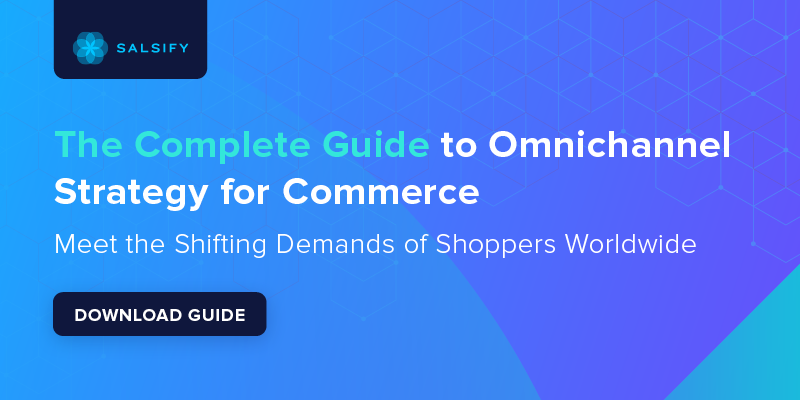In a world with a seemingly endless supply of choices, why do so many shoppers return to their favorite brands again and again?
To answer this question, let’s first consider the now-legendary S&H Green Stamp program: Launched in 1898, these stamps — which could be collected and redeemed for products in the store’s catalog — are considered one of the earliest examples of brand loyalty programs in the modern era.
For such a straightforward idea, the campaign became enormously popular — as both an economic and cultural force. At its peak in the 1960s, demand was so high for S&H’s little green stickers that the company was, for a time, producing more stamps than even the U.S. Postal Service. The campaign ultimately drove 35 million catalog subscriptions and gifted more than $10 billion in merchandise before finally ending in the 1980s. Even Andy Warhol was impressed.
Of course, S&H didn’t give away 11 figures worth of merchandise just to be nice — they were simply leveraging the numerous and often snowballing benefits of a successful brand loyalty program.
Indeed, loyal customers are more likely to not only engage in repeat business with your company but also try new products, spend more money, and even promote your brand to other shoppers.
Bain & Company, famous for creating the net promoter score (NPS), says that a 5% reduction in customer churn rate could increase a business’s profitability by 25% to 95%. Though this stat is almost a decade old, it is referenced time and again.
Intrigued? Here’s a closer look at the power of fostering brand loyalty among your customers, as well as some simple best practices that can help make it happen.
Brand Loyalty Across Generations
Of course, a lot has changed since S&H’s green stamp campaigns. As a result, It’s worth noting that — perhaps unsurprisingly — each consumer generation holds slightly different takes on brand loyalty, each informed by their unique experiences and expectations.
For instance, older generations tend to exhibit more brand loyalty than their younger counterparts, making purchases that are driven by trust and a consistent history of satisfaction with a particular brand. Younger shoppers express less loyalty to brands and are more inclined to support brands that resonate with their values or offer novel solutions.
One McKinsey & Company reports that only 30% of Gen Z in the U.S. and U.K. would revert to their 'go-to' brand when considering a new product or service and 62%, say they’re open to disregarding their favorite brand for other options.
On the other side of the spectrum, baby boomers strongly prioritize discounts, and their loyalty is less likely to fade, even in the face of enticing incentives from competitors. Tellingly, Boomers are the generation most likely to participate in a brand loyalty program, with 79% reporting they belong to at least one, according to Oracle.
While it’s hard to pin down an exact reason for these (sometimes significant) shifts in generational opinion, one theory seems to plausibly explain at least some of them: the rise of digital commerce.
Older shoppers didn’t grow up with the limitless choices provided by the internet — as a result, it makes sense that many of the habits they adopted as younger shoppers might carry over into adulthood, even amid the rise of online shopping.
As an extension, it makes sense that younger shoppers might have less loyalty to brands than their older counterparts, especially when considering the relatively limitless options available to them. This might hold particularly true if the shopper has consistently found satisfying experiences when exploring brands beyond their usual go-to’s.
As traditional retail trends increasingly digital, marketers need to understand these generational variances in loyalty to brands — and why they may persist — to effectively create enduring relationships with customers of all ages.
Strategies for Nurturing Brand Loyalty
As consumer behavior evolves amid the digital age, so too must the strategies employed by brands to foster and maintain their loyalty.
The modern shopper, while both empowered yet encumbered by a deluge of messaging and options, often craves personalized experiences — messaging that speaks directly to their problems, values, and expectations. According to McKinsey & Company, personalization is an expectation for 71% of consumers.
Brands can leverage customer data to provide targeted promotions, product recommendations, and other useful content for the shopper — all things that will help your brand stand out among the competition.
Another potent approach includes offering a money-back guarantee on any products or services you may offer to your customers. Many successful companies, such as Amazon, have made offering money-back guarantees or hassle-free returns a cornerstone of their brand. It can often go a long way in building trust and reassuring any hesitancy at the point of purchase. Put more plainly: If a customer knows you’ll stand by your products, they’ll be more likely to stand by you.
There’s also, of course, the enduring appeal of rewards and loyalty programs — albeit in a slightly different form than collecting little green stamps. Many global brands have now introduced digital loyalty programs that reward customers for repeat business, like Sephora’s Beauty Insider program.
However, these programs aren’t without their risks: Harvard Business Review (HBR) describes “the boomerang effect,” in which the strong loyalty cultivated by the company can ultimately come back to damage it.
As members of a loyalty program, customers tend to get more upset than non-member customers if something goes wrong. And, as they tend to shop the business more frequently than other shoppers, the likelihood of such an incident is always increasing.
As long as you are confident that you can consistently deliver on your brand’s core promises, a digital rewards program is a great way to foster repeat business. Looking ahead, it seems increasingly likely more and more brands will enter this space by the end of the decade — one report estimates that the loyalty management market will more than double in value to $22.8 billion by 2028.
Brand Loyalty Is a Two-Way Street
Despite numerous changes undergone over the past century, the core principles — and benefits — of fostering loyalty for your brand remain the same.
Brands that pay attention to what customers want — and successfully deliver — will always have a leg-up over their competition. Make a great shopping experience for customers, and they’ll keep coming back for more.



.svg)